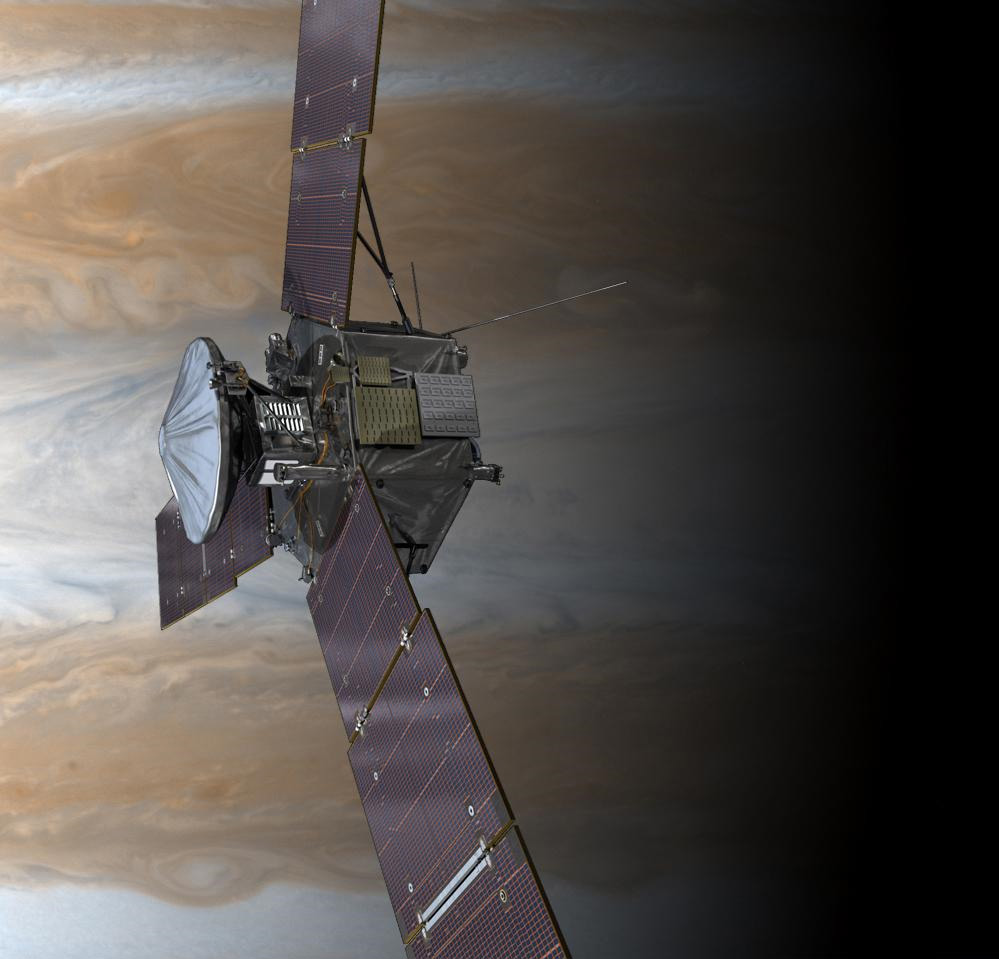
All systems are go again for a NASA probe on its way to Jupiter.
NASA's Juno spacecraft exited a protective "safe mode" on Friday afternoon (Oct. 11) and is currently operating normally as it streaks toward a July 2016 rendezvous with the solar system's largest planet, mission officials said.
Juno went into safe mode on Wednesday (Oct. 9), just 10 minutes after zooming within 347 miles (558 kilometers) of Earth during a flyby designed to boost the spacecraft's speed from 78,000 mph to 87,000 mph (126,000 to 140,000 km/h).

Spacecraft enter safe mode when they encounter an unexpected or anomalous condition. In this case, Juno turned off its instruments and some non-critical components, then pointed its huge solar arrays toward the sun to ensure a steady stream of power, officials said.
Juno team members had expressed confidence that the probe would recover fully from the still-mysterious glitch, and their optimism was borne out, as Juno has now resumed full flight operations.
Further, the main goal of the flyby was accomplished, putting Juno on the correct trajectory to Jupiter, officials said. The spacecraft is so heavy — about 8,000 pounds, or 3,267 kilograms — that it needed a gravity assist from Earth after its August 2011 launch.
Mission team members also checked out Juno's science equipment and took photos of the Earth-moon system during the flyby. Scientists are still analyzing these data and images, most of which were returned to Earth before Juno went into safe mode.
Get the Space.com Newsletter
Breaking space news, the latest updates on rocket launches, skywatching events and more!
When Juno arrives in orbit around Jupiter, it will study the gas giant's atmosphere, gravitational field and magnetic field with its nine science instruments over the course of a full Earth year. Researchers hope the probe's observations reveal insights about the planet's formation, structure and composition, including whether or not it possesses a solid core.
The $1.1 billion Juno mission is named after a goddess in Greek and Roman mythology. In the myth, the god Jupiter (or Zeus, in the Greek version) used clouds to hide his mischief, but his wife Juno was able to peer through the veil to see her husband's antics, according to a NASA description.
Follow Mike Wall on Twitter @michaeldwall and Google+. Follow us @Spacedotcom, Facebook or Google+. Originally published on SPACE.com.
Join our Space Forums to keep talking space on the latest missions, night sky and more! And if you have a news tip, correction or comment, let us know at: community@space.com.

Michael Wall is a Senior Space Writer with Space.com and joined the team in 2010. He primarily covers exoplanets, spaceflight and military space, but has been known to dabble in the space art beat. His book about the search for alien life, "Out There," was published on Nov. 13, 2018. Before becoming a science writer, Michael worked as a herpetologist and wildlife biologist. He has a Ph.D. in evolutionary biology from the University of Sydney, Australia, a bachelor's degree from the University of Arizona, and a graduate certificate in science writing from the University of California, Santa Cruz. To find out what his latest project is, you can follow Michael on Twitter.









